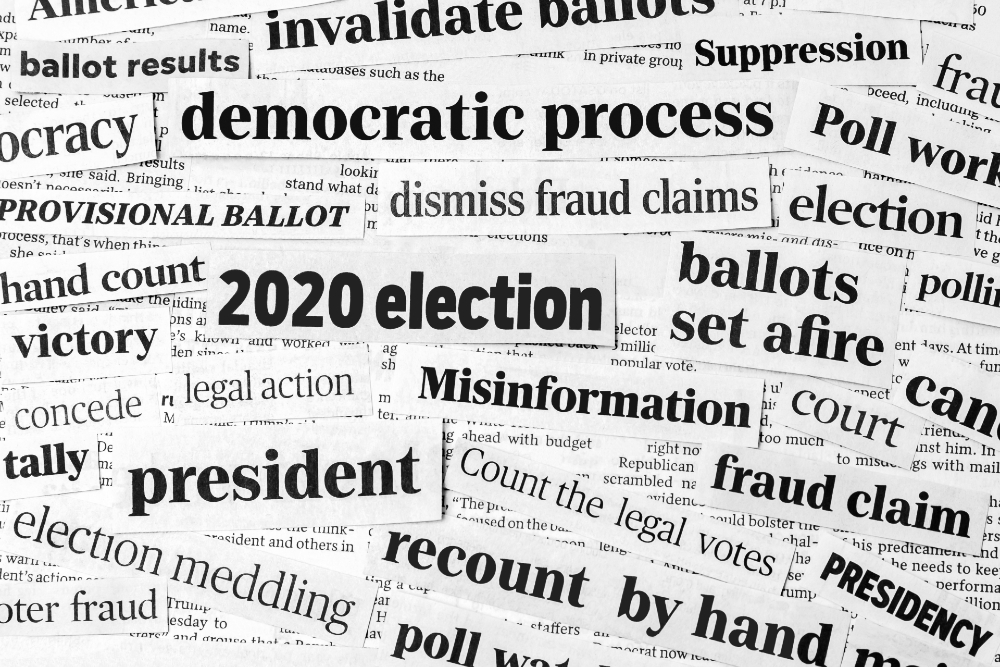From Deference to Disruption:
How The Loper Bright Enterprises Decision is Reshaping Fintech
By: Shubh Mehta LAW‘26

Mobile apps have become staples within the daily lives of many people to access basic financial services such as money transfers, payments, banking and investment. This is thanks to the rise of financial technology, or fintech, companies, which have built a digital bridge between consumers and conventional banks. These benefits come with security risks, however. The personal and financial data managed by fintech companies is a frequent target of cyberattacks. Federal agencies such as the Consumer Financial Protection Bureau (CFPB) and the Securities & Exchange Commission (SEC) have the regulatory authority to address these threats to consumers. However, their power to protect was just severely weakened.
In 1984, the Supreme Court of the United States (SCOTUS), issued a landmark administrative legal precedent, Chevron U.S.A. Inc. v. Natural Resources Defense Council Inc., inaugurating what is now referred to as Chevron deference. Chevron gave agencies such as the SEC and the CFPB significant power to define and enforce certain interpretations of any ambiguities within federal statutes, even if the courts did not agree with the viewpoint. Under Chevron, judicial deference had been afforded to federal agencies’ interpretations of law across a vast swath of decision-making and adjudication within the administrative state, from environmental protection to securities to consumer protection. Over forty years later, on June 28, 2024, SCOTUS decided Loper Bright Enterprises v. Raimondo, overturning Chevron deference, giving the majority of the power to resolve gaps in federal laws back to the courts. Loper Bright may accentuate personal ideologies in judicial decision-making across the country. This piece discusses the possible impacts this change in administrative law could have for fintech companies and their products.
The 1984 Chevron Decision Explained
Chevron deference dictated that courts should defer to agencies’ expertise on issues within their administrative purview to resolve the interpretive nuances left unspecified in the statutes, so long as an agency’s interpretation is reasonable. Now, after Loper Bright, courts have the authority to independently and conclusively interpret ambiguities in laws that agencies administer, abandoning the “reasonable interpretation” standard. The Loper Bright decision has been criticized among other reasons because federal agencies were subject to political accountability that federal judges lack due to lifetime appointments. The Loper Bright decision shifted the responsibility of regulating an ongoing technological revolution in the financial system to the courts, reasserting judicial authority and curtailing the perceived overreach of federal agency powers.
Federal agencies, such as the Securities & Exchange Commission (SEC) and the Consumer Financial Protection Bureau (CFPB), are granted statutory authority to undertake the wide range of administrative activities required to oversee a particular field. These agencies administer laws and policies to their best good-faith interpretation as the country’s economic needs have steadily increased. With Loper Bright, regulating the fast-growing fintech sector may be harder than ever. The lack of strict guidelines with which nonbank finance companies operate has allowed for predatory practices and lack of safeguards for consumers against potential fraud. With the continued growth of fields such as privacy law and artificial intelligence, Chevron deference allowed agencies to marshal their rulemaking and enforcement authority over consumer protection, privacy, and at times new policies to supplement what would otherwise be a patchwork, ad hoc judicial approach. Loper Bright, in contrast, opens the door for aggressive litigation by tech companies with deep pockets to challenge the authority of these agencies and their regulatory actions.
The Growth of Financial Technology
Fintech has become a disruptor in the financial industry, with especially acute impacts on the banking sector. Fintech companies use information and communication technologies (ICTs) to transform consumers’ interaction with financial services. The rise in fintech’s popularity among consumers can be, in part, attributed to its integration with the e-commerce industry and the more relaxed regulatory environment for fintech companies. Cryptocurrencies, like Bitcoin, have gained traction as a credible payment method in mainstream markets. Fintech companies are now able to leverage their services to banks as technology is rapidly evolving in the banking industry, in partnerships known as “middleware.” Middleware is a consumer-facing integration platform between conventional banks and fintech payment systems that provides easy functionality for their consumers. This helps banks modernize their approach in financial services and adapt to an increasingly technologically reliant society. Further, middleware application software allows for complete integration of personal data authorizing banks to directly link with the consumer, modernizing consumer financial services like loans approvals and credit checks.
Digital banking, financial management and investing use mobile apps that have become staples within the daily lives of many people. However, data security is a major emerging issue in this sector because of the immense value of the financial data managed by fintech companies and their products. The fintech industry is among the most targeted and attacked worldwide. The Loper Bright decision severely weakens the SEC and the CFPB, the two agencies with regulatory authority to help address these threats to consumers as fintech products expand and scale. The SEC and the CFPB inform and address the wave of technology innovation hitting consumers in core markets.
The integration of banking and fintech has made regulating the financial services sector much harder for the CFPB, primarily as third-party entities, because of the increasing considerations towards due diligence and corporate governance. Banks are regulated much differently and with considerably more scrutiny than other industries. But regulators are turning their attention towards all levels of the industry, prompting in all likelihood an expectation of more efforts from the SEC, the CFPB and perhaps other agencies to regulate fintech-banking relationships.
Implications for the Securities & Exchange Commission
The SEC, responsible for regulating the securities market, also faces a new reality as Loper Bright subjects their rulemaking and enforcement to rigorous judicial scrutiny. The SEC has proactively regulated digital assets, drawing significant backlash from tech companies who balk at “regulation by enforcement.” Looking beyond the scope of fintech, the SEC has been subject to high-profile litigation losses from challengers who do not agree with its rulemaking decisions. Now, companies operating in all industries may argue that SEC regulations exceed statutory authority, casting further uncertainty on fintech regulation.
Implications for the Consumer Financial Protection Bureau
In October 2023, the CFPB proposed a rule to regulate digital applications such as wallets and payments apps to better protect lower- and middle-income families from fintech companies that are not under the same supervisory purview as banks and credit unions. The rule – the sixth in a series of CFPB rules on financial products and services – will have significant implications for fintech companies and specifically the growing relationships between fintech companies and banks. The Loper Bright decision will open those partnerships and the agency rules that might govern them to uncharted forms of judicial review. Here, too, Loper Bright will lead to more litigation and regulatory instability for the CFPB.
Buy Now, Pay Later (BNPL)
The CFPB has been scrutinizing emerging fintech trends that expose consumers to harm due to lack of regulation. Buy Now, Pay Later (BNPL) is a prime example. BNPL offers consumers the option to purchase a wide range of products on loan and pay over time, interest free. BNPL, however, does not provide consumers with the same protections as credit card companies do, leading the CFPB to use its statutory authority to group BNPL lenders as credit card providers.
For example, some BNPL lenders do not report these loans to credit bureaus and often do not disclose hidden fees to consumers, destabilizing credit markets and potentially incentivizing consumers to financially overextend. The rapid growth of the BNPL market means that these risks associated with consumer debt and financial instability outpace regulatory responses. In May 2024, the CFPB had the technical wherewithal to issue an interpretive rule on consumer protection in this environment. BNPL vendors are pushing back in response to its decision-making. Would the CFPB’s interpretive rule survive judicial scrutiny without Chevron? Ambiguities lie in both the Consumer Financial Protection Act or the Truth in Lending Act (the latter is the statutory authority for the CFPB’s BNPL interpretive rule) and it remains to be seen how Loper Bright will impact BNPL companies and their operating power.
A narrower regulatory purview for the CFPB may comfort anxious BNPL providers for the time being. But in the long-term, a period of diverging judicial outcomes may hamper BNPL vendors more than the centralized agency interpretation would, shrinking the market. Uncertainty leads to less investment which leads to less innovation. Under some judicial decisions, and perhaps if Congress steps in, BNPL companies could be forced into more rigid, complex and even contradictory regulatory regimes, similar to those which banks are subjected.
Conclusion
The Supreme Court’s decision to eliminate Chevron deference represents a major shift in administrative law, which will significantly affect the fintech sector. As courts take a more active role in interpreting financial laws, agencies such as the SEC and CFPB and fintech companies will have to prepare for an uncertain, fragmented regulatory landscape. As Loper Bright strips considerable power from agencies, an arguably welcome shift for the evolving fintech world, decisions from courts may actually result in fintech companies facing a period of even greater compliance costs and regulatory confusion than ever before. One thing is certain, consumer protection must remain the priority in any discussion of fintech regulation.
Shubh Mehta is a second year J.D. candidate at Temple University Beasley School of Law. His interests lie at the intersection of technology, finance, and the law.
This blog is a part of iLIT’s student blog series. Each year, iLIT hosts a summer research assistant program, during which students may author a blog post on a topic of their choosing at the intersection of law, policy, and technology. You can read more student blog posts and other iLIT publications here.



